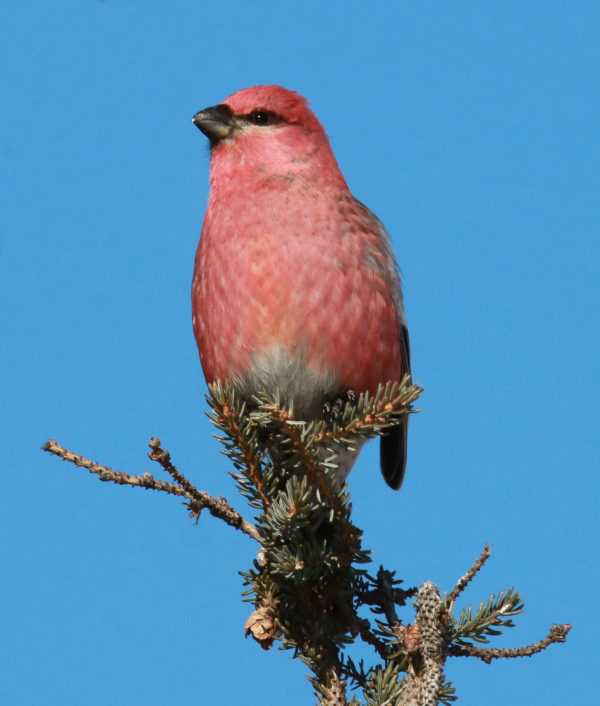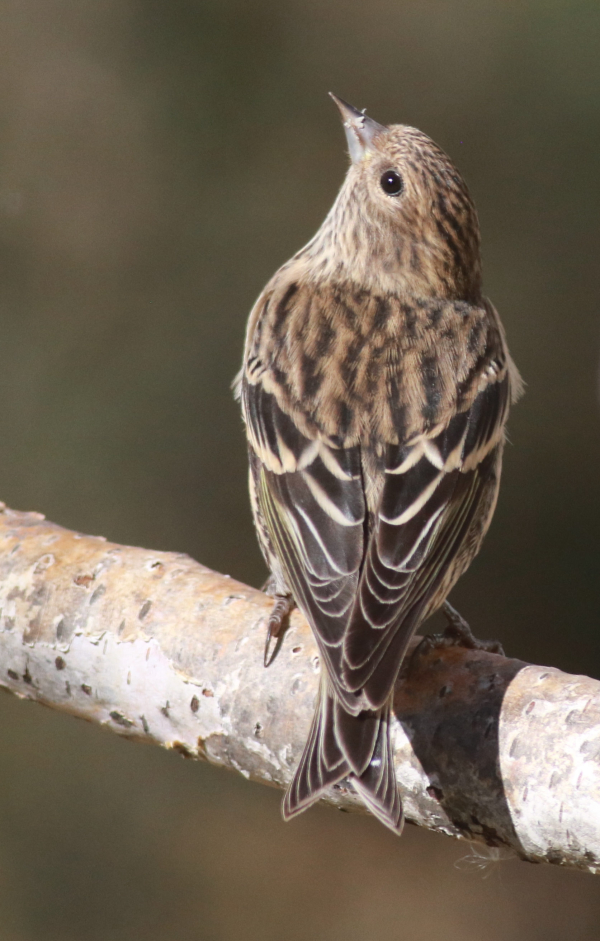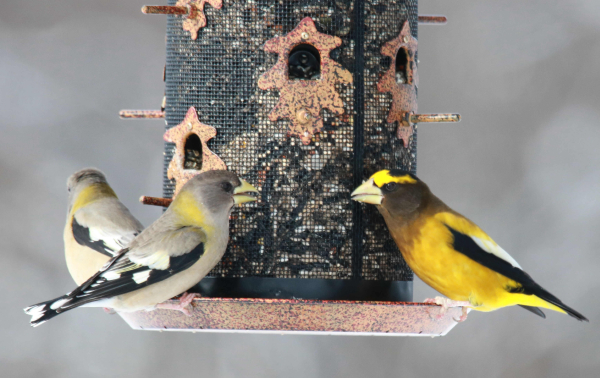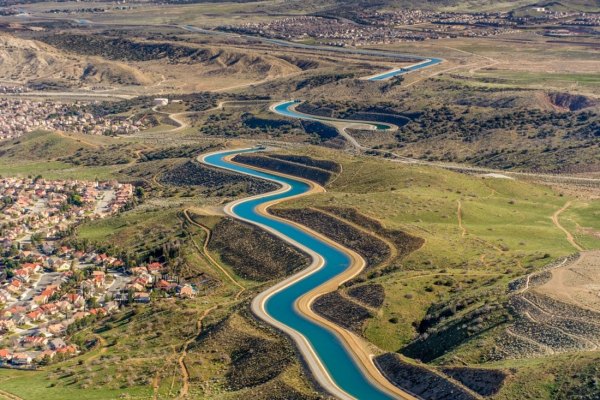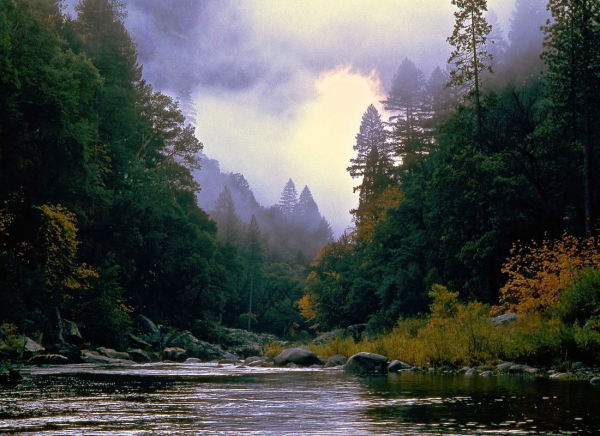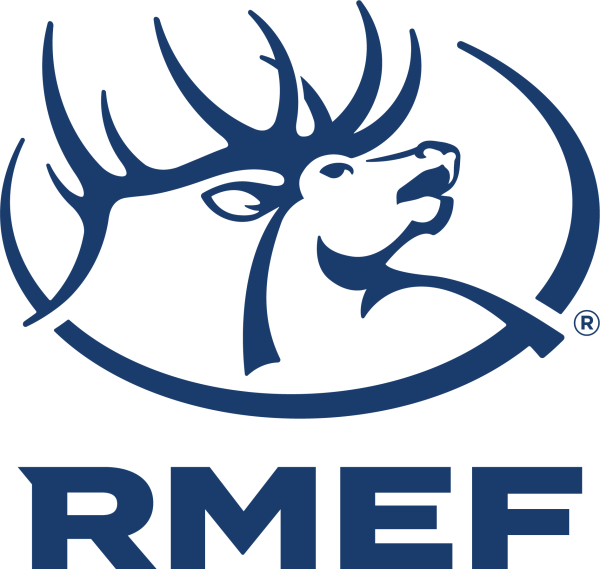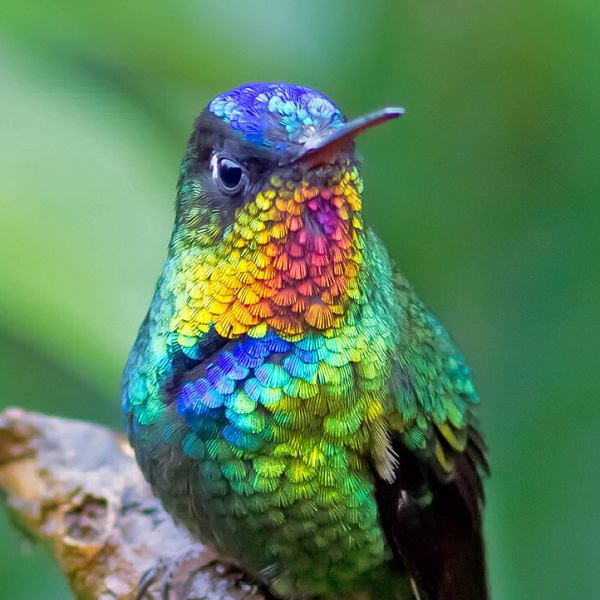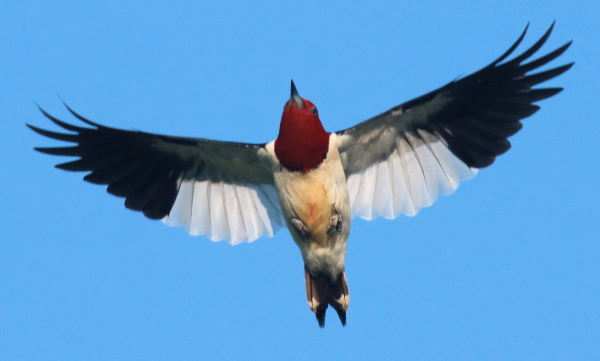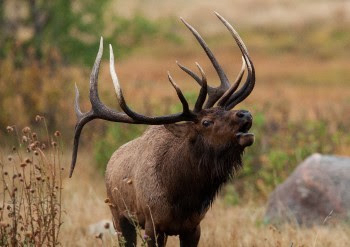The colors and shapes of birds’ feathers are part of our attraction to winged wonders like this Fiery-throated Hummingbird photographed by Joseph Pescatore.
An illustration of the 7 feather types – wing, down, tail, contour, semiplume, bristle, and filoplume.
A Red-headed Woodpecker in flight shows black primary wing feathers and white secondary wing feathers; contour feathers cover its body, and its tail feathers are specially adapted to provide support against tree trunks, branches, and other perches (photo by Paul Konrad).
If you are like us, you’ve probably been finding feathers in your yard the past month or so, and we’re betting it’s made you more curious about feathers. You’ve probably also seen some birds with missing feathers – tail feathers are often most obvious, wing feathers too. So much of what makes birds attractive to us is connected to their feathers. Feather colors and shapes catch our attention, and allow us to identify different species, sexes, and ages of birds.
Birds’ ability to fly captures everyone’s attention, and feathers help birds withstand a variety of weather and water conditions, which makes feathers an important part of the maintenance of birds’ physiology. With that in mind, we thought it would be interesting to share an introduction to the topic of feathers and molting, with a more expansive lesson link available for you to study more about feathers any time you wish.
Now, the Bird Academy’s “feather lesson” is expansive and Free, provided online to include information you can download along with a variety of videos to help visualize the diversity of information provided. Here, we provide a sampling of information that should whet your interest in learning more about feathers, plumage, and molting – so important to the life and survival of birds.
– Each feather on a bird’s body is a finely tuned structure that serves an important role in the bird’s activities. Feathers rarely act independently, usually overlap, and work together in a variety of ways that allow birds to fly, keep warm, keep dry, help them communicate, and often help them blend in with their surroundings.
– There are 7 types of feathers: Read more

